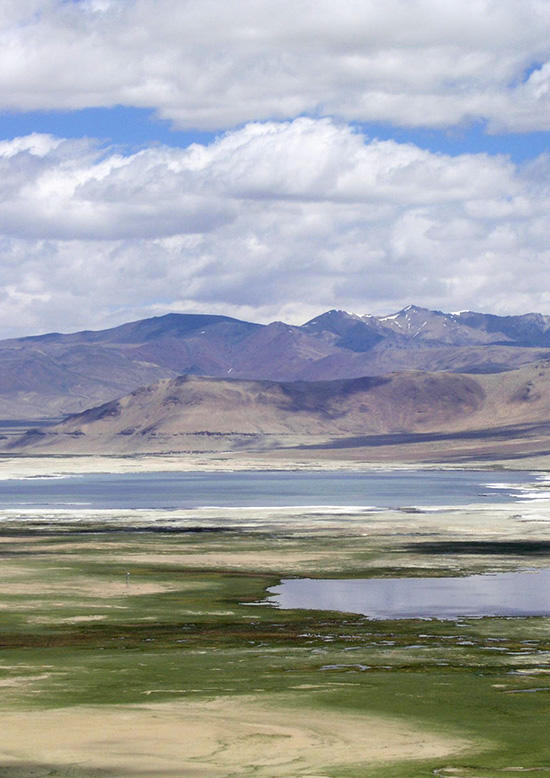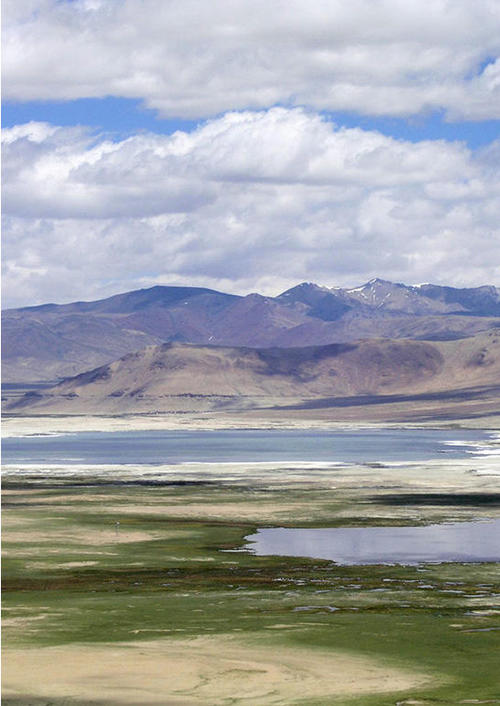The mystery of Ladakh
From the series “Einstein’s Heirs” (ZDF). Based on research within the DFG project “Dynamics of the Indian Monsoon since the Mid Holocene: High-resolution multiproxy studies on the Tso Kar basin in the arid high mountain area of Ladak
May 31, 2021
First broadcast on ZDF: February 24, 2005, 7:30 p.m., 45 minutes
Authors: Gisela Graichen and Peter Prestel
Based on research within the DFG project “Dynamics of the Indian Monsoon since the Mid Holocene: High-resolution multiproxy studies on the Tso Kar basin in the arid high mountain area of Ladakh (NW-India)” (together with Prof. Dr. Bernd Wünnemann, Free University of Berlin)
Scientific background and content of the film
Climate change is considered by many to be the greatest challenge humanity has ever had to face. There is widespread agreement among researchers that global warming is increasing. There is far less agreement about the consequences. And the human contribution to warming is also controversial, as natural climate change has always existed. Paleoclimate research uses archives that go back far enough into Earth's history to exclude humans as the driving force behind climate change. If you know the amplitudes of the natural climate cycles, you can determine the anthropogenic share. An Indian-German expedition, led by Frank Riedel, travels to a key point in the climate, in the high mountains of Ladakh. Two large wind systems meet here. Atlantic air currents come from the west, which are primarily responsible for winter precipitation, and from the south come the monsoon, which brings rain in summer. In order to research the interplay between the two systems, the team of scientists wants to drill into the sediments of a lake at an altitude of 4,600 m, in which climate signals from the last millennia are stored - learning from the past for the future. Altitude sickness and the icy cold nights are making things difficult for the scientists. Even if the drill head, without which the expedition would be pointless, sinks into the lake in the meantime - the venture succeeds. Far above the current lake, evidence is found that the lake was once very large and over 100 m deep. Locals tell researchers that the lake level has fallen rapidly in recent decades. The rainfall is therefore increasingly absent. Climate change is so rapid that the lake will disappear in the next few years. Complex laboratory studies must first show what part humans play in this.
Reach and audience reactions
The film was broadcast for the first time on ZDF on a Sunday evening at prime time and reached around 4.5 million viewers. It is one of two expedition films that were produced for the “Einstein Year” on ZDF. Since its original broadcast, the film has been repeated several times on other channels, especially Phoenix. The audience comments addressed directly to me were extremely numerous and almost exclusively positive. There was also an increasing number of congratulations from colleagues about this film. ZDF listed the film as one of the channel's most successful documentaries in 2005.

Tso Kar, Ladakh. There was once an important lake here, which has largely dried up due to climate change and will probably disappear completely in a few years (Photo: F. Riedel 2004).
